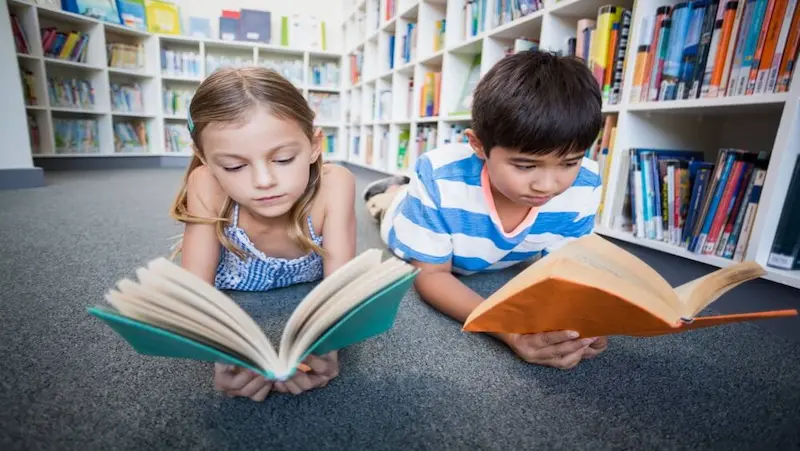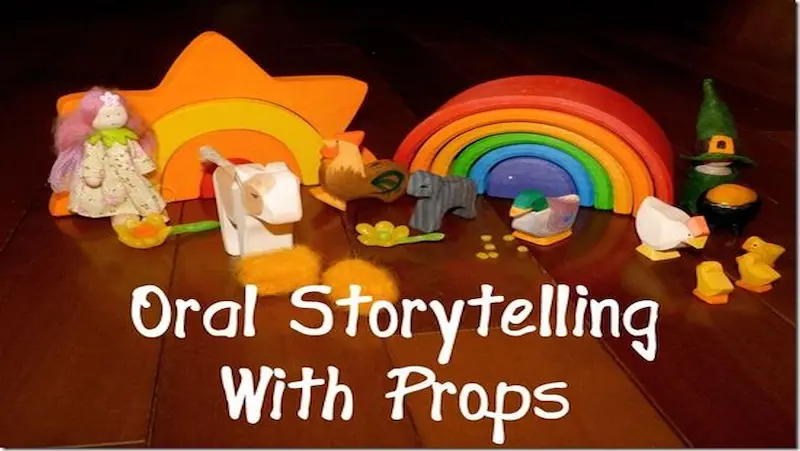Reading is an essential skill that opens up a world of knowledge, imagination, and discovery. For children, in particular, the act of reading plays a crucial role in their overall development and lays the foundation for a successful future. The benefits of reading for kids are vast and multifaceted, encompassing cognitive, linguistic, social, and emotional aspects of their growth.
One of the primary cognitive benefits of reading is the enhancement of language skills. When children engage with books, they are exposed to a rich vocabulary and various sentence structures, which in turn improves their own verbal and written communication.
Beyond cognitive development, reading also has a profound impact on children’s emotional and social well-being. Books often delve into the realm of emotions, offering stories that explore empathy, compassion, and resilience. By immersing themselves in fictional worlds and identifying with characters, children develop a deeper understanding of their own emotions and those of others. This empathy-building aspect of reading lays the groundwork for healthy relationships, effective communication, and emotional intelligence.
In today’s digital age, where screens and gadgets often dominate children’s attention, cultivating a love for reading becomes even more crucial. Encouraging children to engage with books not only promotes healthy screen-time habits but also fosters a lifelong passion for learning and self-improvement.
In this modern era, where information is readily accessible, the importance of reading for kids cannot be overstated. It equips them with the tools they need to navigate the complexities of the world, empowers them to think critically, and instills a lifelong love for learning.
As parents, educators, and society as a whole, it is our responsibility to nurture and encourage the habit of reading, ensuring that every child development has the opportunity to unlock the countless benefits it offers.
Table of contents
- Why Reading for Kids is Important
- Tips to Encourage Reading Habits in Kids
- Age-Appropriate Books and Reading Resources
- Interactive Reading Activities and Games
- Strategies for Kids Struggling with Reading
- Making Reading Fun and Enjoyable
- Creating a Reading-Friendly Environment
- Free and Affordable Reading Resources
- Conclusion
- Frequently Asked Questions
Why Reading for Kids is Important
In a world driven by technology and digital distractions, fostering a love for reading in children has become more important than ever. Reading not only opens up new worlds and endless possibilities, but it also offers a multitude of benefits for children’s cognitive development, emotional well-being, and educational growth.
In this blog, we will delve into these three key areas to understand why reading is crucial for kids and why it should be encouraged from an early age.

Cognitive Benefits of Reading
a) Language and Vocabulary Development: Reading introduces children to a vast array of words and phrases, expanding their vocabulary and strengthening their language skills. Exposure to different writing styles, genres, and authors helps children develop their own voices and enhances their ability to articulate their thoughts and ideas effectively.
b) Cognitive Development: Reading stimulates the brain and encourages critical thinking, problem-solving, and analytical skills. It promotes imagination, creativity, and the ability to think abstractly. As children navigate through the narratives and characters, their comprehension and cognitive abilities improve, enabling them to make connections, predict outcomes, and understand complex concepts.
c) Concentration and Focus: Reading requires sustained attention and concentration, which helps children develop the ability to focus and concentrate for longer periods. It enhances their ability to block out distractions and maintain attention on a specific task, which can be beneficial in academic and everyday life.
Emotional Benefits of Reading
a) Empathy and Understanding: Books provide a unique opportunity for children to experience different perspectives, cultures, and emotions. Through the stories and characters, children learn to empathize, understand, and relate to others. This emotional intelligence gained through reading nurtures compassion, tolerance, and acceptance, fostering positive relationships and enhancing their overall emotional well-being.
b) Self-Expression and Reflection: Reading allows children to explore their own emotions and experiences in a safe and imaginative space. It helps them understand their feelings, thoughts, and identities, promoting self-awareness and emotional growth. Books can serve as mirrors that reflect their own lives and windows that offer glimpses into different lives and possibilities.
c) Stress Reduction: Reading has a calming effect on the mind and can serve as a refuge during stressful times. It provides an escape from daily worries, transports children to different worlds, and helps them unwind. This relaxation can contribute to reducing anxiety and improving overall mental health.
Educational Benefits of Reading
a) Academic Success: Reading is the foundation for academic achievement. It improves reading comprehension, fluency, and writing skills, which are essential across all subjects. Children who read regularly tend to perform better in school, exhibit stronger analytical thinking, and demonstrate higher levels of knowledge across various disciplines.
b) Expanded Knowledge and Curiosity: Reading broadens children’s horizons, exposes them to a wealth of information, and nurtures their natural curiosity. It encourages them to explore different topics, fuels their thirst for knowledge, and cultivates a lifelong love of learning.
c) Language and Communication Skills: By reading extensively, children are exposed to well-structured sentences, correct grammar, and effective communication. They unconsciously absorb these language patterns, leading to improved writing and verbal skills. A strong command of language opens doors to better communication, self-expression, and overall success in life.
Tips to Encourage Reading Habits in Kids
In today’s digital age, where children are often surrounded by screens and distractions, developing a reading habit in kids is more important than ever. Reading not only enhances their language skills and vocabulary but also fosters creativity, imagination, and critical thinking.
As a parent, you play a crucial role in nurturing a love for reading in your children. Here are some practical and actionable tips to encourage reading habits in kids.

Be a Reading Role Model:
Children are more likely to embrace reading if they see their parents enjoying books. Set aside regular reading time for yourself and let your children observe you engrossed in a book. This sets a positive example and shows them that reading is a pleasurable activity.
Create a Reading-Friendly Environment:
Designate a cozy and comfortable reading corner or nook in your home. Fill it with a variety of age-appropriate books, magazines, and other reading materials. Make sure the space is well-lit and inviting, with cushions or bean bags for added comfort. This dedicated space will motivate children to spend time immersed in mindfulness books for kids.
Read Aloud Together:
Reading aloud to children, regardless of their age, has numerous benefits. It improves their listening skills, expands their vocabulary, and sparks their interest in stories. Select books that are appropriate for their age and read together regularly. Encourage them to ask questions, make predictions, and discuss the plot and characters.
Visit Libraries and Bookstores:
Take your child on regular trips to the local library or bookstore. Let them explore the shelves, choose books that capture their interest, and obtain a library card. Libraries often host storytelling sessions and other reading-related events, which can further ignite their passion for books.
Offer a Variety of Reading Materials:
Present your child with a diverse range of reading materials, including picture books, graphic novels for kids, magazines, and age-appropriate newspapers. Tailor the content to their interests and hobbies, whether it’s animals, sports, fantasy, or science. Offering variety ensures they find something they genuinely enjoy reading.
Set Daily Reading Goals:
Encourage your child to read for a certain amount of time each day. Start with smaller goals and gradually increase the duration as their reading stamina improves. Create a reading chart or use a reading app to track their progress visually, providing a sense of achievement and motivation.
Encourage Book Discussions:
Engage your child in conversations about the books for kids they read. Ask open-ended questions about their favorite characters, plot twists, or how they relate to the story. Such discussions not only deepen their understanding but also help them develop critical thinking skills and express their thoughts effectively.
Organize a Family Book Club:
Transform reading into a social activity by starting a family book club. Choose a book that suits the reading level and interests of everyone involved. Set a schedule for reading chapters and gather for discussions. This fosters a sense of community around reading and allows for shared experiences and insights.
Limit Screen Time:
While technology has its benefits, excessive screen time can hinder reading habits. Establish reasonable limits on electronic devices and encourage alternative activities like reading. Create device-free zones, especially during meal times and before bedtime, to encourage reading as a preferred leisure activity.
Celebrate Reading Achievements:
Recognize and celebrate your child’s reading achievements to motivate and reinforce their reading habit. Whether it’s completing a book, reaching a reading milestone, or participating in reading competitions, praise their efforts and reward them with incentives like a special outing, a new book, or a book-themed gift.
Age-Appropriate Books and Reading Resources
In a world dominated by digital screens and instant gratification, cultivating a love for reading in children and young adults is more important than ever. The right books and reading resources tailored to different age groups can make a significant impact on a child’s development and lifelong relationship with literature.
Books about money management for kids or financial education for kids is a good way to make understand them how to manage money in younger age.
In this blog, we will explore the importance of age-appropriate reading materials and categorize them based on different age groups, providing a helpful guide for parents, educators, and young readers alike.

Early Childhood (Ages 0-5):
During their early years, children are exploring language and the world around them. Books with simple, repetitive text, colorful illustrations, and engaging stories can captivate their imaginations.
Board books, picture books, and interactive free books for kids that encourage tactile exploration are ideal choices. Look for books that introduce basic concepts such as colors, numbers, and shapes, while also promoting early literacy skills.
Recommended Reading Resources:
1. “Goodnight Moon” by Margaret Wise Brown
2. “The Very Hungry Caterpillar” by Eric Carle
3. “Where’s Spot?” by Eric Hill
4. “Brown Bear, Brown Bear, What Do You See?” by Bill Martin Jr. and Eric Carle
Elementary School (Ages 6-10):
As children progress into elementary school, their reading abilities expand, and they start developing their own interests. Chapter books, easy readers, and illustrated novels are suitable options.
Stories that emphasize friendship, adventure, and self-discovery resonate well with this age group. Non-fiction books about animals, science, history, and biographies can also foster curiosity and expand their knowledge.
Recommended Reading Resources:
1. “Charlotte’s Web” by E.B. White
2. “Harry Potter and the Sorcerer’s Stone” by J.K. Rowling
3. “The Chronicles of Narnia” by C.S. Lewis
4. “The Magic Tree House” series by Mary Pope Osborne
5. National Geographic Kids books
Pre-Teen (Ages 11-13):
Pre-teens crave books that reflect their emerging identities, challenges, and social dynamics. Novels that explore themes of friendship, self-acceptance, and coming-of-age are popular.
Adventure, fantasy, and mystery genres tend to captivate their imaginations, allowing them to delve into enchanting worlds. Non-fiction books that touch upon history, biographies of inspirational figures, and science can expand their horizons.
Recommended Reading Resources:
1. “The Giver” by Lois Lowry
2. “Wonder” by R.J. Palacio
3. “Percy Jackson and the Olympians” series by Rick Riordan
4. “The Hunger Games” trilogy by Suzanne Collins
5. “I Am Malala: How One Girl Stood Up for Education and Changed the World” by Malala Yousafzai
Teenagers (Ages 14-18):
Teenagers often prefer books that deal with complex themes, emotions, and moral dilemmas. Young adult fiction is a genre that resonates strongly with this age group.
It tackles issues such as identity, relationships, mental health, and social justice. Diverse voices and perspectives are essential in promoting empathy and understanding.
Recommended Reading Resources:
1. “The Fault in Our Stars” by John Green
2. “To Kill a Mockingbird” by Harper Lee
3. “The Hate U Give” by Angie Thomas
4. “The Book Thief” by Markus Zusak
5. “1984” by George Orwell
Interactive Reading Activities and Games
Reading is a fundamental skill that forms the basis for a child’s academic success and personal development. However, engaging children in reading can sometimes be challenging, especially in today’s fast-paced digital world.
To make the reading experience enjoyable and interactive, educators and parents can incorporate various activities and games that ignite a love for reading in kids. In this blog post, we will explore some exciting and interactive reading activities and games that can captivate children’s imaginations and enhance their reading skills.

Storytelling with Props:
Bring stories to life by using props while reading aloud to children. Choose age-appropriate books and select props that correspond to the characters or objects in the story. As you read, involve children by asking them to hold the props or act out certain scenes. This interactive approach not only improves comprehension but also makes the reading experience more memorable and engaging.
Word Hunts:
Transform the act of learning new words into an exciting game. Create word hunt activities where children search for specific words in a book. Provide them with a list of words to find and ask them to underline or circle each word as they discover them. This activity encourages active reading and expands vocabulary while making it enjoyable.
Book Club Discussions:
Organize a book club for children to encourage them to read and discuss books in a social setting. Let the kids choose personalized books for kids they are interested in and allocate specific reading time. Arrange regular meetings where they can share their thoughts, favorite parts, and characters from the books they’ve read. This collaborative environment enhances comprehension, critical thinking, and communication skills.
Reading Theater:
Turn reading into a dramatic experience by organizing a reading theater activity. Select a script or scene from a book and assign different roles to children. Encourage them to act out the characters’ dialogues and use expressive voices. This activity not only enhances reading fluency but also boosts confidence and creativity.
Interactive E-books:
Explore the world of interactive e-books that blend storytelling with interactive elements. These digital books often contain animations, sound effects, and interactive games that prompt children to actively engage with the story. The multimedia features create an immersive reading experience and appeal to tech-savvy kids, making reading a fun and interactive endeavor.
Reading Scavenger Hunts:
Create reading scavenger hunts where children search for specific items or information within a book. Provide them with a list of clues or questions related to the story, and challenge them to find the answers as they read. This activity encourages close reading and improves comprehension skills while fostering a sense of adventure.
Create Book Trailers:
Inspire children’s creativity and digital skills by having them create book trailers. Ask them to choose a favorite book, summarize the story, and create a short video trailer using images, text, and music. This activity allows children to practice summarizing, storytelling, and digital media skills while promoting their enthusiasm for reading.
Reading Games and Apps:
Explore the plethora of reading games and apps available for children. These interactive digital resources provide a wide range of activities such as word puzzles, reading comprehension games, and phonics exercises. Choose reputable apps or online platforms that align with children’s reading levels and goals, ensuring a well-rounded and enjoyable reading experience.
Strategies for Kids Struggling with Reading
Reading is a fundamental skill that forms the foundation for academic success and lifelong learning. However, some children may face challenges when it comes to reading, which can be frustrating for both them and their parents.
As a parent, it’s important to support and guide your child through these difficulties. In this blog, we will explore effective strategies that can help children who are struggling with reading, allowing them to develop confidence, improve their skills, and foster a love for reading.

Create a Supportive Environment:
Establishing a positive and supportive environment at home can greatly aid your child’s reading journey. Encourage reading as a fun and enjoyable activity, rather than a chore. Set aside dedicated time for reading each day and create a cozy reading nook with comfortable seating, good lighting, and a variety of age-appropriate books.
Read Aloud Together:
Reading aloud to your child has numerous benefits. It helps them develop vocabulary, comprehension skills, and a love for storytelling. Take turns reading paragraphs or pages, allowing your child to practice and build confidence. Discuss the story, ask questions, and encourage them to share their thoughts and predictions.
Choose Books of Interest:
To engage a struggling reader, it’s crucial to select books that align with their interests and reading level. Let your child have a say in choosing the books they want to read, whether it’s about dinosaurs, sports, fantasy, or any other topic they enjoy. Utilize the local library or bookstores to explore a wide range of options.
Break It Down:
Reading can be overwhelming for struggling readers, so breaking down the text into manageable chunks can make it less daunting. Encourage your child to focus on one sentence or paragraph at a time, ensuring they understand the meaning before moving on. Use your finger or a bookmark to guide their reading and help them maintain their place on the page.
Utilize Multisensory Approaches:
Children with reading difficulties often benefit from multisensory approaches that engage different senses simultaneously. Use tools such as finger tracking, highlighting, or color-coded text to enhance their focus and comprehension. Consider incorporating auditory aids, such as audiobooks or text-to-speech software, to support their reading experience.
Practice Phonics and Sight Words:
Phonics and sight words are vital building blocks for reading proficiency. Develop a routine for practicing phonics, helping your child understand the relationship between letters and their sounds. Utilize flashcards or online resources to reinforce sight words, which are frequently used and cannot be easily sounded out. Consistency and repetition are key.
Seek Professional Help:
If your child continues to struggle with reading despite your efforts, consider seeking professional guidance. Reach out to their teacher, school reading specialist, or a literacy tutor who can provide targeted interventions and personalized strategies. Early intervention can prevent further difficulties and help your child develop essential reading skills.
Provide Encouragement and Celebrate Progress:
Supporting your child emotionally is just as important as providing academic assistance. Encourage them throughout their reading journey, praising their efforts and progress. Celebrate small achievements and milestones, reinforcing their confidence and motivation. Remember, every step forward is significant.
Making Reading Fun and Enjoyable
In a world dominated by screens and digital distractions, it can be a challenge to cultivate a love for reading in children. However, with a little creativity and effort, we can make reading a fun and enjoyable activity for kids.
By tapping into their imaginations, incorporating interactive elements, and exploring diverse genres, we can spark their interest and help them develop a lifelong passion for books. In this blog, we’ll explore some creative ideas to make reading exciting and enjoyable for kids.

Create a Cozy Reading Nook:
Transform a corner of your home into a cozy reading nook. Set up a comfortable chair or bean bag, add soft blankets and pillows, and surround the area with bookshelves or a colorful bookcase. Make it an inviting and special space where your child can escape into the world of books.
Plan a Reading Adventure:
Make reading an adventure by creating a theme around a book or series. Decorate the reading space to match the theme, dress up as characters, and plan related activities. For example, if you’re reading a book about pirates, set up a treasure hunt or create a pirate-themed craft. This immersive experience will make reading more exciting and memorable.
Host a Book Club:
Encourage social interaction and foster a love for reading by organizing a children’s book club. Invite your child’s friends or other families to join. Each month, choose a book to read and discuss. Allow the children to share their thoughts, ask questions, and engage in activities related to the story books for kids. This collaborative approach will not only make reading enjoyable but also develop critical thinking and communication skills.
Use Technology to Enhance Reading:
While screens can be a distraction, they can also enhance the reading experience. Explore interactive e-books or audiobooks that bring stories to life through animations, sound effects, and narration. Let your child choose from a variety of formats and explore different ways to engage with the text. Technology can make reading more immersive and appealing to tech-savvy kids.
Introduce Reading Challenges and Rewards:
Create reading challenges or goals to motivate your child. Set achievable targets, such as reading a certain number of books or completing a series. Use a chart or a reading log to track progress and celebrate milestones. Offer rewards, such as a special outing or a small treat, to acknowledge their achievements. These incentives can make reading a fun and rewarding activity.
Explore Different Genres:
Introduce your child to a wide range of genres and formats to cater to their diverse interests. Offer picture books, graphic novels, fantasy, mystery, science fiction, and non-fiction books. Encourage them to explore different topics and authors. By providing a variety of options, you can help your child discover their preferences and expand their reading horizons.
Make Reading a Family Activity:
Set aside dedicated family reading time where everyone gathers to read their own books. This creates a positive reading environment and allows children to see reading as a shared and enjoyable activity. Encourage discussions about books and recommend titles to each other. Seeing parents and siblings engaged in reading will inspire kids to follow suit.
Organize Author Visits or Book Events:
Invite local authors or illustrators to visit your child’s school or community center. Hearing firsthand about the creative process and the stories behind the books can ignite children’s curiosity and passion for reading. Attend book fairs, literary festivals, or library events that offer interactive sessions, storytelling, and book-related activities. These experiences make reading more tangible and exciting.
Creating a Reading-Friendly Environment
One of the most effective ways to achieve this is by setting up a cozy reading nook or corner. In this blog, we will provide you with suggestions and tips to help you design the perfect reading nook that will inspire and nurture your reading habits.

Choose the Ideal Location:
Selecting the right location for your reading nook is crucial. Look for a quiet area in your home with minimal distractions, away from high-traffic zones. Natural light is an important aspect to consider, as it enhances the reading experience.
A corner near a large window or a spot with a skylight would be ideal. However, if natural light is limited, you can incorporate artificial lighting options, such as a reading lamp or wall-mounted sconces.
Comfortable Seating:
Investing in a comfortable chair or seating option is key to creating a welcoming reading space. Look for a cozy armchair, a chaise lounge, or a bean bag that offers proper support for your back. Consider adding cushions or throw pillows to enhance the comfort level. If space allows, you can even incorporate a small sofa or a window seat for added versatility and lounging options.
Adequate Storage:
A well-organized reading nook ensures that all your favorite books and reading materials are within reach. Install bookshelves or floating wall-mounted shelves to keep your collection neatly displayed.
Incorporate storage solutions such as baskets or boxes for magazines, bookmarks, and other reading accessories. Having a designated space for your reading materials not only keeps your nook clutter-free but also adds to the overall aesthetic appeal.
Personalize with Décor:
Make your reading nook feel like a cozy retreat by adding personal touches and decor elements that reflect your style and interests. Hang artwork or photographs that inspire you, or display quotes from your favorite authors.
Introduce plants or flowers to bring a touch of nature and serenity to the space. Consider using soft, warm colors on the walls or incorporating textured wallpaper to create a soothing atmosphere.
Good Lighting:
Proper lighting is essential for comfortable reading. If natural light is limited, choose lighting fixtures that offer a warm and soft glow. Opt for adjustable or dimmable lighting options to cater to different reading moods and times of the day. Avoid harsh fluorescent lights, as they can cause eye strain and disrupt the calming ambiance you’re trying to create.
Add a Side Table or Shelf:
Having a nearby surface to place your cup of tea, a reading lamp, or a notebook is incredibly convenient. Consider adding a small side table or a floating shelf near your seating area. This will provide a designated space for your essentials and ensure that you have everything you need within arm’s reach, eliminating the need for constant interruptions and disruptions.
Soundproofing and Privacy:
If possible, incorporate soundproofing measures to create a tranquil reading environment. Thick curtains, acoustic panels, or a strategically placed bookshelf can help reduce external noise and create a sense of privacy. This will enable you to fully immerse yourself in the words on the page and escape into the world of literature without distractions.
Free and Affordable Reading Resources
There is a plethora of online resources that provide free or affordable reading materials, making it easier for kids to access a world of captivating stories, educational content, and literary adventures. In this blog, we will explore a diverse range of websites, apps, and platforms that offer free or affordable reading resources, empowering young minds to explore, learn, and grow through the joy of reading.

Project Gutenberg (Website):
Project Gutenberg is a digital library offering over 60,000 free eBooks, including classics, children’s books, and non-fiction texts. Kids can dive into timeless stories like “Alice’s Adventures in Wonderland” or explore educational resources for various subjects. With its user-friendly interface and vast collection, Project Gutenberg is a treasure trove for young readers.
International Children’s Digital Library (Website and App):
The International Children’s Digital Library (ICDL) is a remarkable resource that provides free access to high-quality children’s books from around the world. With over 4,500 books in more than 60 languages, the ICDL opens doors to diverse cultures and perspectives, fostering global awareness and appreciation among young readers.
Epic! (App):
Epic! offers an extensive digital library for kids aged 12 and under, with a vast collection of over 40,000 books, audiobooks, and educational videos. It covers a wide range of genres and subjects, catering to different reading levels and interests. Epic! offers a free 30-day trial and affordable monthly subscription options, making it a valuable resource for families.
Storyline Online (Website and App):
Storyline Online features popular children’s books read by celebrated actors, accompanied by animated illustrations. Kids can enjoy engaging storytelling experiences while enhancing their listening skills. Storyline Online is entirely free and provides an excellent platform for children to develop a love for literature and storytelling.
Libby (App):
Libby connects readers with their local library’s eBook collection, offering a vast selection of digital books and audiobooks. With a library card, children can access an array of free reading materials, including popular titles, new releases, and educational resources. Libby’s user-friendly interface and customizable reading experience make it an ideal platform for young readers.
Open Library (Website):
Open Library is an initiative by the Internet Archive that provides free access to millions of books, including classic literature and contemporary works. While some books are available for borrowing, many are available for online reading without any restrictions. Open Library promotes digital literacy and enables children to explore a wide range of genres and authors.
Oxford Owl (Website):
Oxford Owl offers free eBooks for children, carefully categorized by age group and reading level. With a focus on literacy development, the platform provides additional resources such as phonics guides, storytelling videos, and educational activities. Oxford Owl empowers parents and educators with the tools needed to support children’s reading journey.
Bookshare (Website and App):
Bookshare is a platform designed for individuals with print disabilities, offering a vast collection of accessible books in multiple formats. It provides free memberships to qualifying students, giving them access to a wide range of titles, including textbooks, popular fiction, and non-fiction. Bookshare promotes inclusive reading and ensures that every child can experience the joy of books.
Conclusion
In conclusion, it is crucial to encourage parents to foster a love for reading in their children, and the provided resources can play a significant role in this endeavor. Reading is not only a fundamental skill but also a gateway to knowledge, imagination, and personal growth mindset books for kids. By instilling a love for reading at an early age, parents can positively impact their children’s cognitive development, language skills, and overall academic performance.
The provided resources offer a wealth of opportunities for parents to engage their children in reading activities. Whether it is through age-appropriate books, interactive storytelling apps, or local library programs, these resources can ignite a passion for reading in children and make it a joyful and rewarding experience.
In addition to the immediate benefits, fostering a love for reading sets the foundation for lifelong learning. Children who develop a reading habit are more likely to become independent learners, avid readers, and critical thinkers. They are better equipped to navigate the complexities of the world, broaden their perspectives, and pursue their passions.
It is essential for parents to recognize that their involvement in cultivating a love for reading is invaluable. By utilizing the provided resources, parents can play an active role in shaping their children’s future, empowering them with the essential skills and knowledge needed for success. Ultimately, fostering a love for reading in children is a gift that will continue to enrich their lives long after childhood, opening doors to endless possibilities and opportunities for growth.
Our mission is to ignite curiosity, foster innovation, and build essential life skills in young minds. With BrightChamps, your child will not only embrace the future with confidence but also excel as a well-rounded and empowered individual. Join us in shaping a brighter tomorrow, one champ at a time.
Frequently Asked Questions
A1: Reading promotes language skills, boosts imagination, and enhances cognitive development.
A2: Set aside regular reading time, provide a variety of books, and be a reading role model.
A3: Some popular choices include “Where the Wild Things Are,” “Charlotte’s Web,” and “Harry Potter” series.
A4: Yes, activities like reading scavenger hunts, story-based crafts, and interactive story apps can engage children.
A5: Use different voices while reading aloud, create cozy reading nooks, and let your child choose books of interest.
A6: Break reading into smaller parts, use visual aids, and consider audiobooks to support comprehension.
A7: Reading aloud enhances vocabulary, and listening skills, and fosters a love for books and storytelling.
A8: Have a dedicated reading space, keep a variety of books accessible, and make reading materials visible.
A9: Libraries, online platforms like Project Gutenberg, and websites offering free e-books can be great resources.
A10: Some popular options are Epic!, Reading Eggs, and Storyline Online.


 We are an army of educators and passionate learners from BrightChamps family, committed to providing free learning resources to kids, parents & students.
We are an army of educators and passionate learners from BrightChamps family, committed to providing free learning resources to kids, parents & students.








